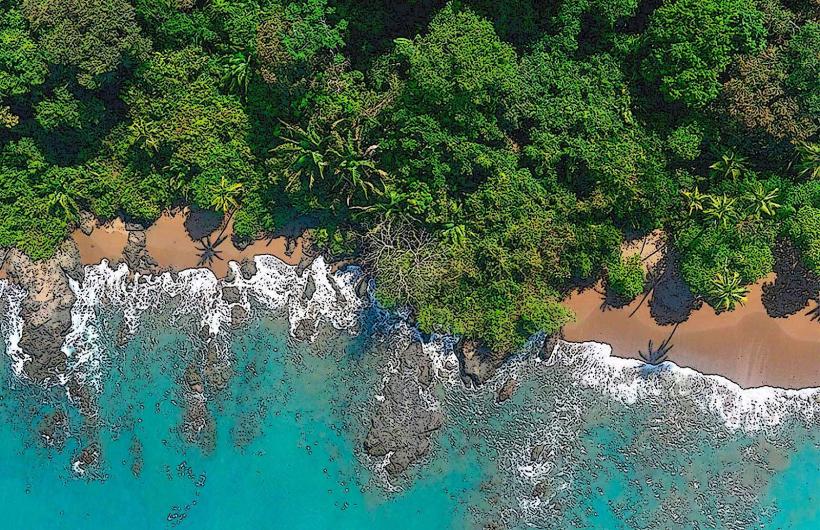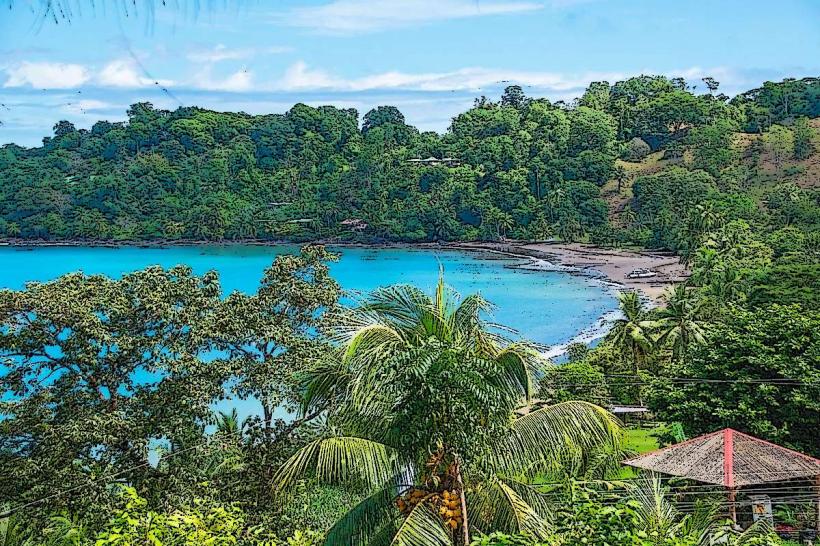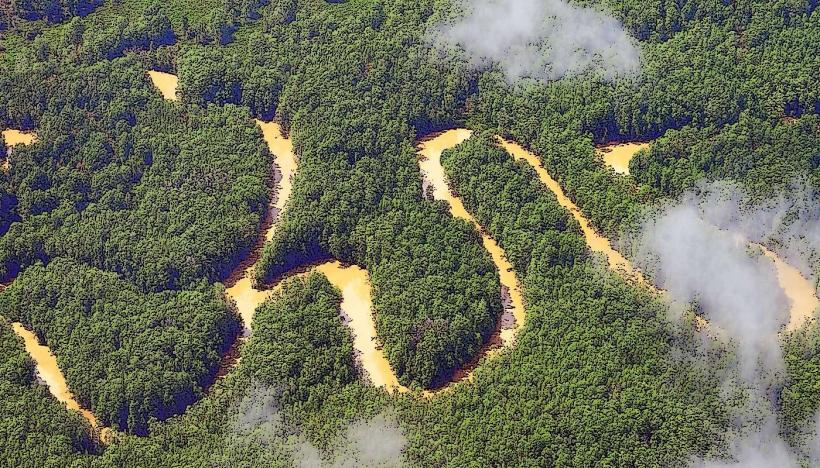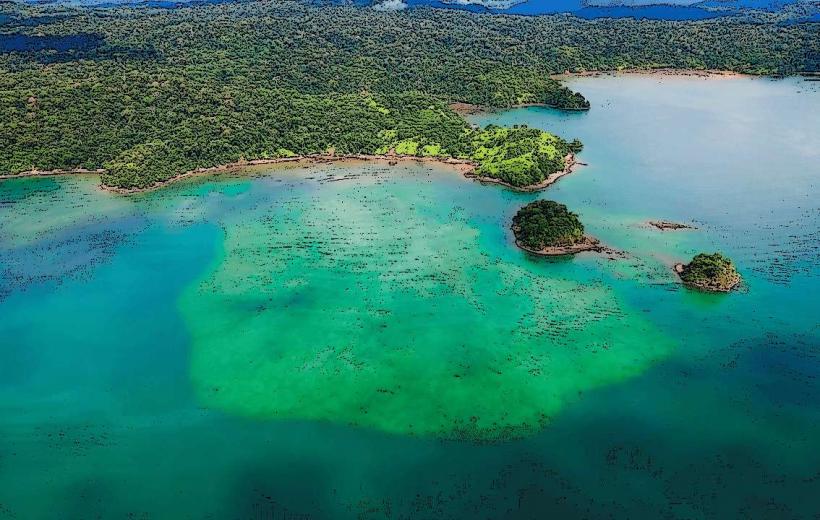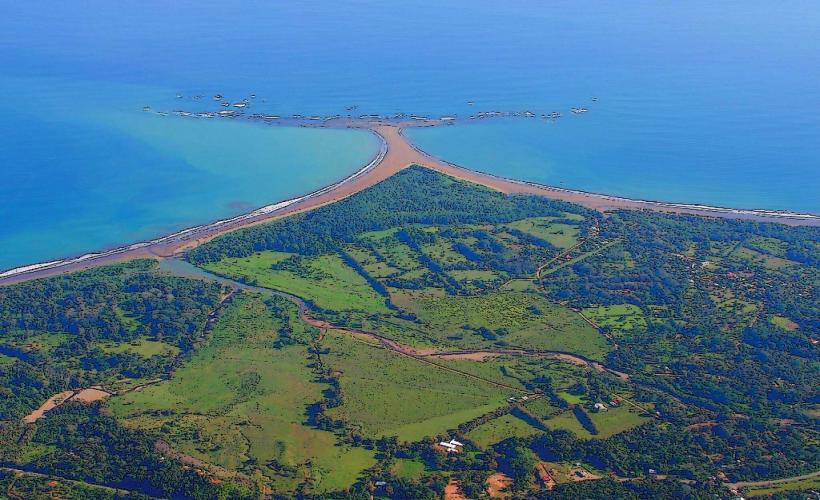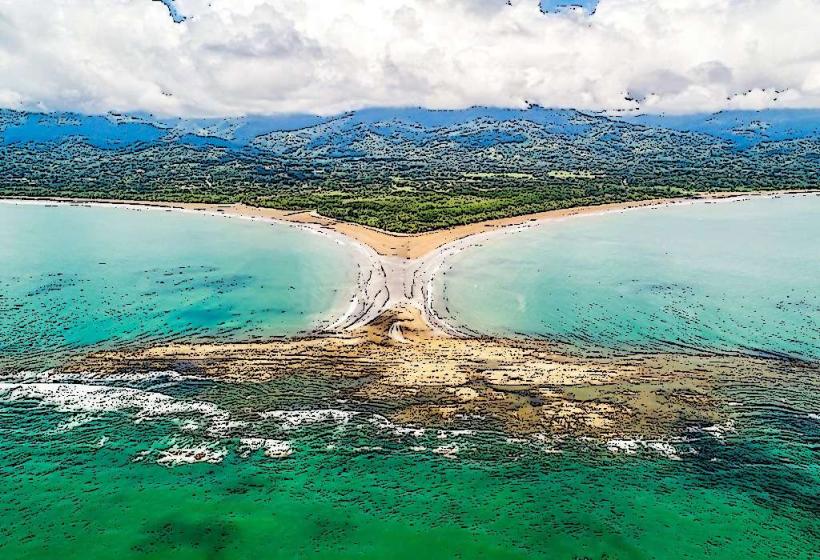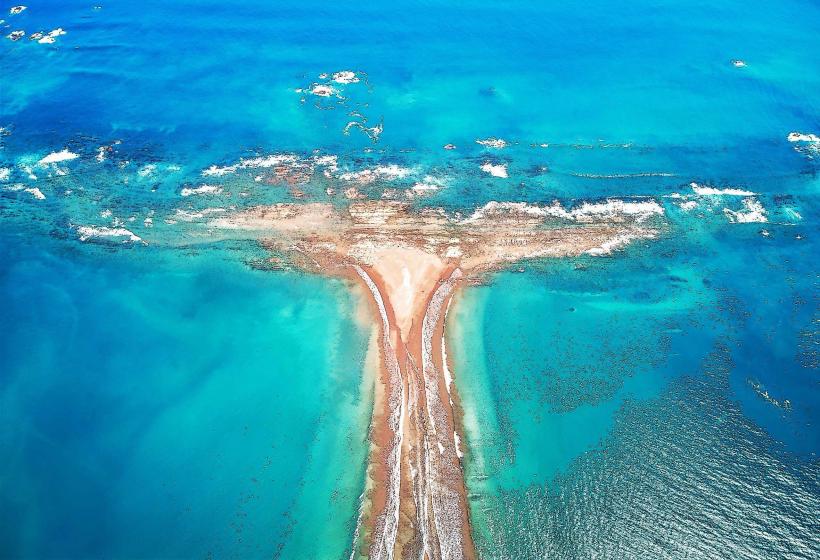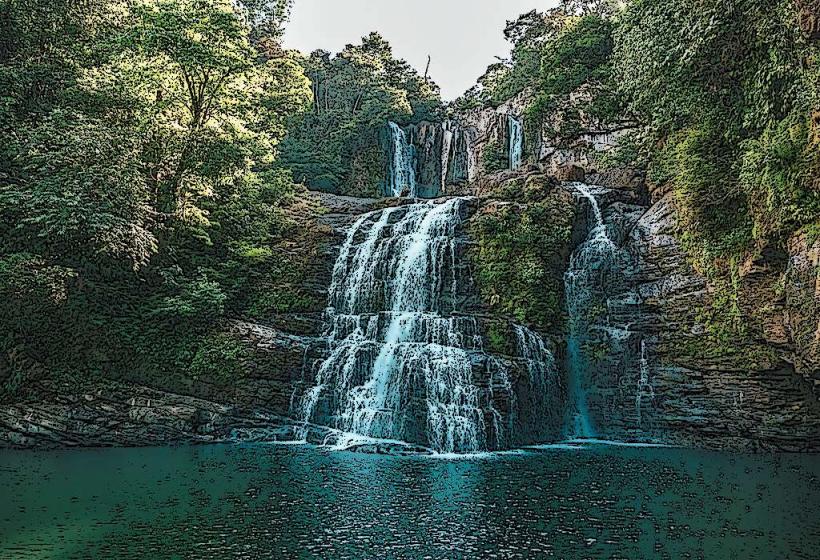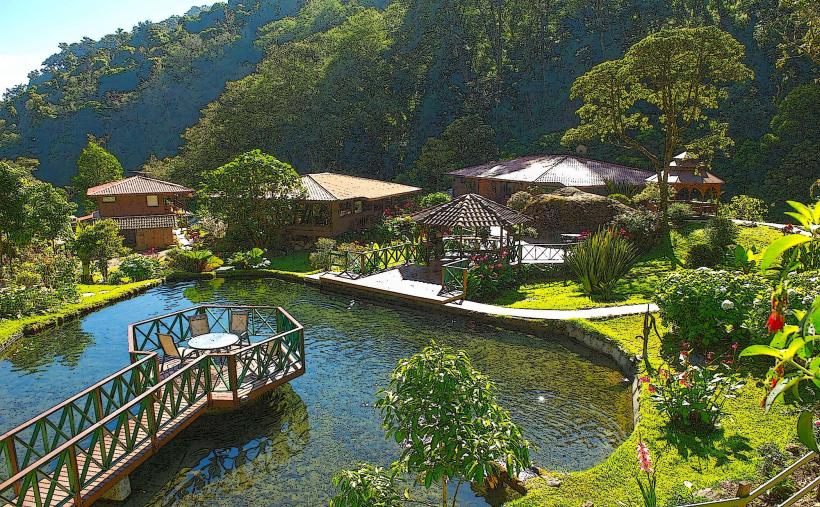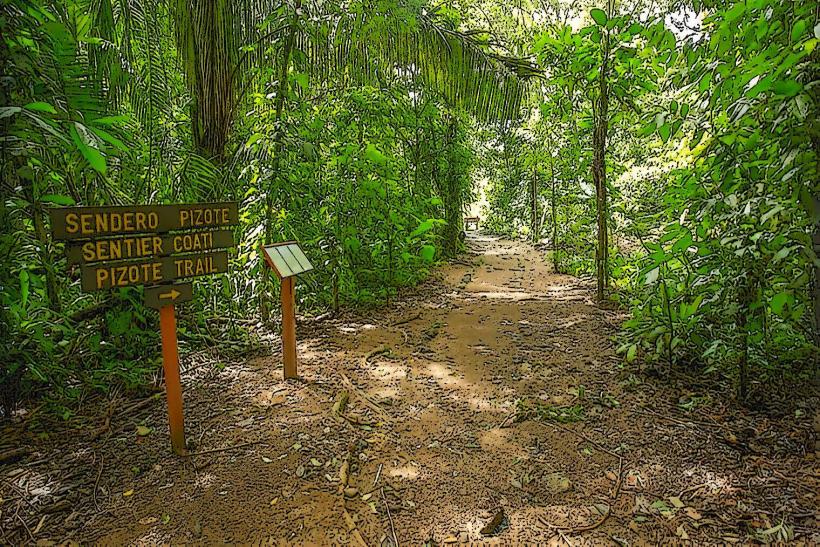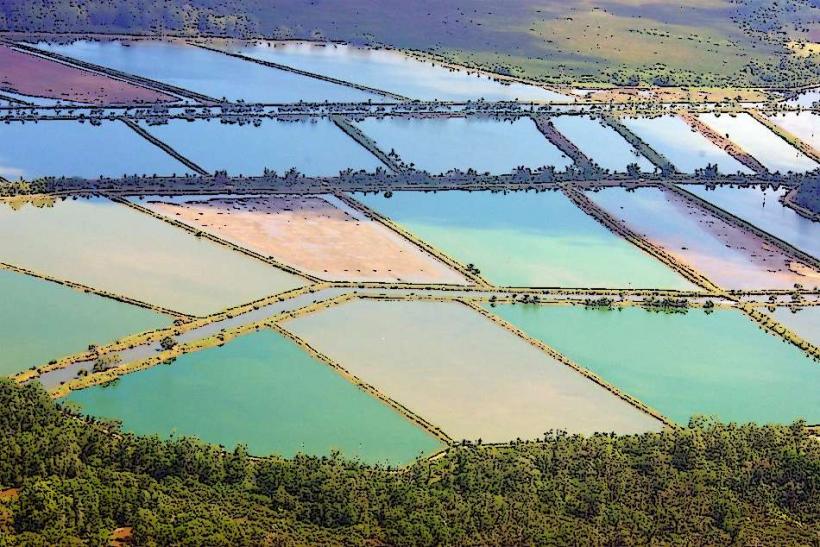Information
Landmark: Piedras Blancas National ParkCity: Zona Sur
Country: Costa Rica
Continent: North America
Piedras Blancas National Park is a beautiful and ecologically significant park located in the southern Pacific region of Costa Rica, near the town of Golfito in Puntarenas Province. The park is known for its rich biodiversity, tropical rainforests, and scenic landscapes, making it a prime destination for eco-tourism and nature lovers. Covering over 14,000 hectares (34,590 acres), Piedras Blancas protects a significant portion of the Osa Peninsula's tropical rainforests and plays an important role in preserving the region's natural ecosystems.
Geography and Location
- Location: Piedras Blancas National Park is situated on the southern Pacific coast of Costa Rica, just north of Golfito and near the Golfo Dulce. It is part of the Osa Peninsula, which is considered one of the most biodiverse regions on Earth. The park is positioned in the rainforest zone and forms an important connection between the Corcovado National Park and Golfo Dulce.
- Topography: The park's varied landscapes range from lowland rainforests to mountainous terrain. It is crisscrossed by rivers, streams, and waterfalls, with the Piedras Blancas river being one of the most significant. The park’s high elevation areas offer breathtaking views of the surrounding coastline and the Pacific Ocean.
Ecological Significance
Piedras Blancas is an ecologically important park due to its role in preserving the region's biodiversity and protecting several endangered species. The park is part of the Corcovado Conservation Area, which has been designated as a UNESCO World Heritage Site.
- Flora:
- The park is home to a wide variety of tropical plants, including large tropical hardwoods, palms, ferns, and epiphytes. The dense rainforest vegetation creates a unique environment for many species of flora, especially in the lowland rainforests and higher elevations.
- Some species of trees found in the park include ceiba, mahogany, and teak, as well as various species of balsa and cypress trees.
- Fauna:
- Piedras Blancas is home to a wealth of animal species, some of which are endangered or threatened. Among the species that inhabit the park are:
- Scarlet macaws, toucanets, and parrots: These vibrant birds are a highlight for birdwatchers visiting the park.
- Monkeys: Both the mantled howler monkey and the white-faced capuchin monkey are found in the park.
- Big cats: The park is home to endangered jaguars, pumas, and ocelots, although these elusive animals are rarely spotted.
- Reptiles and amphibians: The park also contains a variety of reptiles and amphibians, including poison dart frogs, iguana species, and snakes.
- Endangered species: Piedras Blancas is an important refuge for several endangered species, including the Baird’s tapir, Central American spider monkey, and ant-eating anteater.
- Piedras Blancas is home to a wealth of animal species, some of which are endangered or threatened. Among the species that inhabit the park are:
- Marine Life:
- The park is situated near the coast and is part of the marine ecosystem of Golfo Dulce, where you can find various species of marine life, such as sea turtles, dolphins, and whales. The waters of the gulf are known for their calm, clear conditions, making it a popular spot for diving and kayaking.
Activities in Piedras Blancas National Park
Hiking:
- Piedras Blancas offers several hiking trails that take visitors through its lush rainforest and offer spectacular views of the surrounding landscapes. Trails vary in difficulty, but all allow visitors to experience the park’s incredible biodiversity and dense, tropical ecosystems. Some popular trails include:
- The Piedras Blancas Trail: A relatively easy trail that introduces visitors to the park's flora and fauna.
- The Sirena Trail: A longer trail that goes deeper into the rainforest and leads to some of the park’s more remote areas.
- Waterfall Hikes: Several shorter hikes lead to waterfalls, including the El Encanto waterfall, where visitors can swim in the refreshing pools.
Wildlife Watching:
- One of the main attractions in Piedras Blancas is wildlife watching. The park is a hotspot for birdwatching, where visitors can see exotic species like scarlet macaws, toucanets, parrots, and eagles. The area is also home to howler monkeys, capuchin monkeys, tapirs, and anteaters, making it a great destination for wildlife enthusiasts.
- Early mornings and late afternoons are the best times for wildlife spotting, as animals tend to be most active during these periods.
Canopy Tours:
- For those seeking adventure, canopy tours are available, offering a thrilling way to see the park from a different perspective. Zip-lining through the forest canopy allows visitors to enjoy views of the forest, rivers, and wildlife as they soar through the trees.
Kayaking and Boating:
- Kayaking in the calm waters of Golfo Dulce is another popular activity for visitors to Piedras Blancas. Visitors can explore the river systems, mangroves, and coastal areas while spotting wildlife and enjoying the natural beauty of the region.
- Boat tours also provide a scenic way to explore the coastline and spot dolphins, whales, and sea turtles.
Fishing:
- Fishing enthusiasts can enjoy the opportunity to fish in the Savegre River and Golfo Dulce. The calm waters of the gulf are home to various species of fish, and fishing tours are available for both beginners and experienced anglers.
Conservation and Environmental Impact
Piedras Blancas National Park plays a crucial role in the protection of Costa Rica's natural ecosystems and biodiversity. The park is part of the larger Corcovado Conservation Area, which helps to preserve the region's rainforests and prevent the loss of species that depend on these habitats.
- The park is a haven for endangered species, such as the Baird’s tapir and jaguar, and is one of the few remaining places where these animals can be found in the wild.
- Eco-tourism in the region is closely managed to ensure that it benefits the local communities and promotes conservation. The entrance fees to the park support ongoing conservation efforts, and visitors are encouraged to follow sustainable tourism practices to minimize their impact on the environment.
Practical Information
Best Time to Visit:
- The best time to visit Piedras Blancas National Park is during the dry season, which runs from December to April. This period offers the most pleasant weather for outdoor activities, with less rain and more stable trail conditions.
- The rainy season (May to November) can bring heavy rainfall, making some trails muddy and slippery, but the park's lush vegetation is particularly vibrant during this time, and wildlife sightings can still be frequent.
Access:
- Piedras Blancas is accessible by car from Golfito or Puerto Jiménez, both of which are approximately 1-2 hours away. A 4x4 vehicle is recommended, especially if visiting during the rainy season.
- Guided tours are available, and many visitors opt for these to enhance their experience, as guides can provide insights into the park’s flora, fauna, and conservation efforts.
Accommodations:
- There are a variety of accommodations available near the park, ranging from eco-lodges and small hotels to more luxurious options. Many lodges near the park offer guided tours, birdwatching experiences, and other activities.
- Puerto Jiménez and Golfito also offer additional accommodation options, with easy access to the park for day trips.
What to Bring:
- Sturdy footwear for hiking, as the trails can be muddy and slippery.
- Bug repellent to protect against mosquitoes and other insects.
- Binoculars for birdwatching and cameras to capture the incredible wildlife and landscapes.
- Waterproof gear such as a rain jacket or poncho, particularly during the rainy season.
Conclusion
Piedras Blancas National Park is an extraordinary destination for nature lovers, wildlife enthusiasts, and eco-tourists seeking to experience Costa Rica's incredible biodiversity and pristine rainforests. Whether you’re hiking through the park’s lush trails, watching vibrant birds, or exploring the coastal waters of Golfo Dulce, Piedras Blancas offers an unforgettable adventure. With its importance for conservation and its natural beauty, this park is a vital part of Costa Rica's efforts to preserve its unique ecosystems for future generations.

